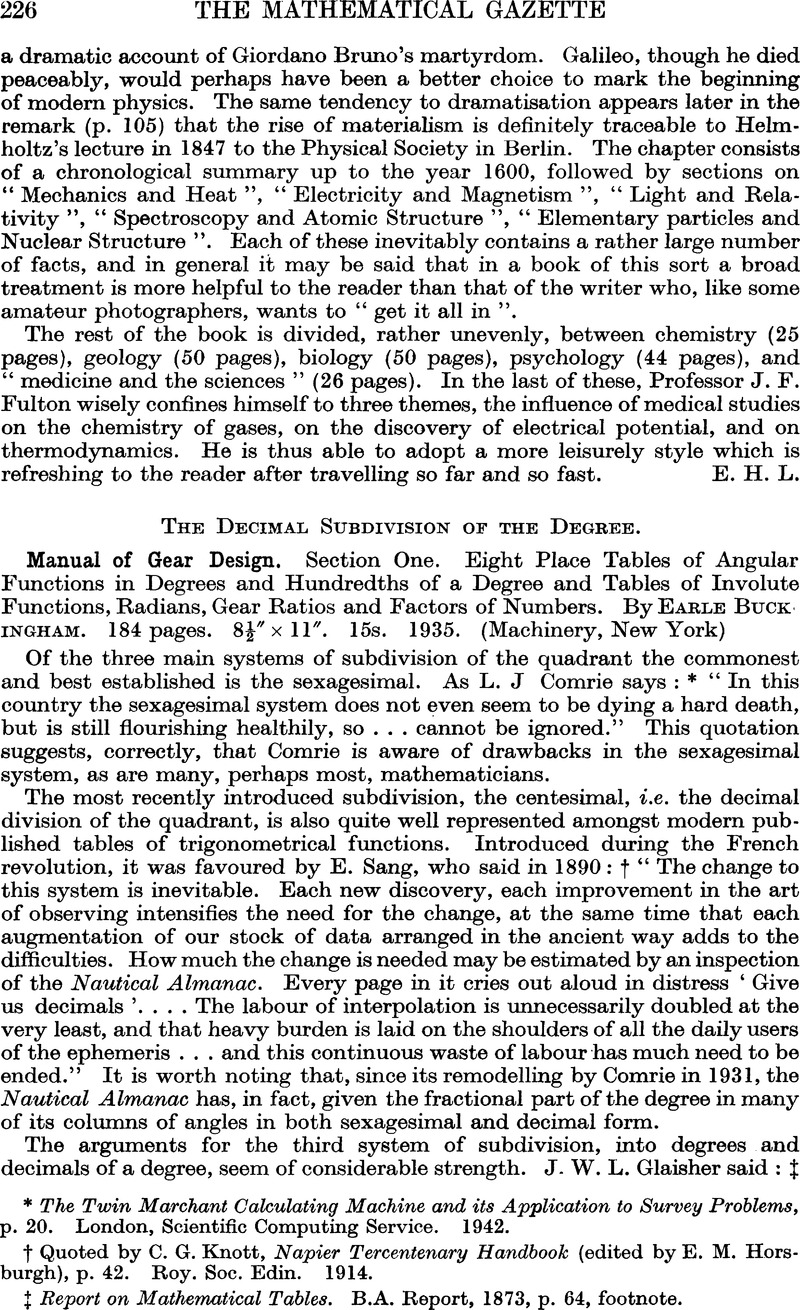No CrossRef data available.
Published online by Cambridge University Press: 03 November 2016

page 226 of note * The Twin Marchant Calculating Machine and its Application to Survey Problems, p. 20. London, Scientific Computing Service. 1942.
page 226 of note † Quoted by Knott, C. G., Napier Tercentenary Handbook (edited by Horsburgh, E. M.), p. 42. Roy. Soc. Edin. 1914 Google Scholar.
page 226 of note ‡ Report on lMathematica1 Tables. B.A. Report, 1873, p. 64, footnote.
page 227 of note * Napier Tercentenary Memorial Volume (edited by Knott, C. G.), p. 313. London. Longmans. 1915 Google Scholar.
page 228 of note * Pollak, L. W., in his Handweiser zur harmonischen analyse, Prague, 1929, p. 38 Google Scholar, refers to a table Zehnstellige Tafel der Sinus, Cosinus und Tangenten für die dezimale Teilung des Nonagesimalgrades, calculated by E. Engel, which gives 10 decimal natural values. This is stated to have been published in 1920 by the ‘General-direktion des Grundsteuerkatasters (Österr. Triangulierungs- und Kalkulbureau)’. Further details of this table are unknown, except that it provides tables of proportional parts, although second difference interpolation is apparently necessary.
page 228 of note † Logarithmic values of trigonometrical functions are better represented in spite of their diminished importance in these days of calculating machines. This is due to three works by Peters: Zehnstellige Logarithmentafel. Band 11. 1919. Siebenstellige Logarithmen der Trigonometrischen Funktionen. . . 1921. Sechsstellige Logarithmmen der Trigonometrischen Funktionen. . . . 1921. These give respectively 10, 7, and 6 decimal values of four functions for every thousandth of a degree. Bremiker’s Logarithmisch-Trigonometrische Tafeln mit fünf Decimalstellen, 1872, is also worthy of mention on account of its influence on the revival of the degree-and-decimal subdivision.